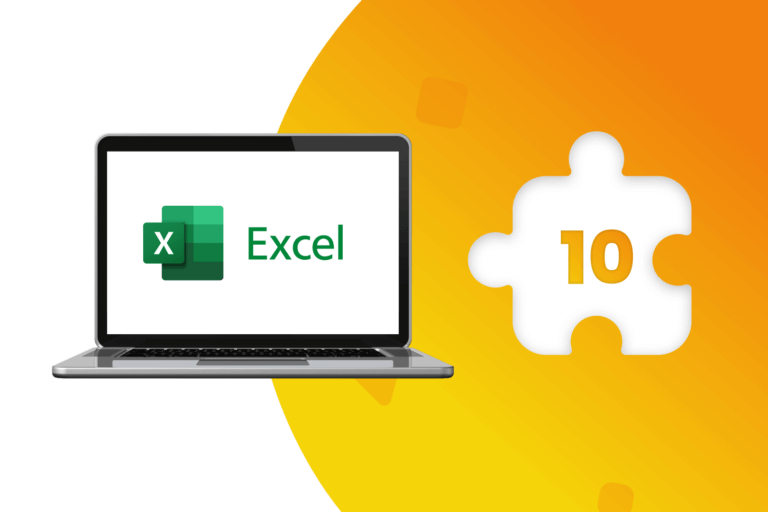Despite its relative “age”, email marketing continues to be one of the best online interaction tools to position a company, as well as to provide better customer acquisition and loyalty tools for its products or services.
Consolidating and increasing the market positioning of any company requires, first of all, forging an easily recognizable “brand image” and that, consequently, generates loyalty and follow-up from its target audience.
To achieve this objective, various advertising strategies have been used through multiple written or audiovisual communication channels, which generate more or less impact. However, the advent of the digital age exponentially multiplied the possibilities of successfully accessing a broader and better identified target audience, through new online tools. Among these, email marketing (also known as emailing or e-mailing) still stands out.
This technological solution, well used, provides excellent results in terms of coverage and audience loyalty, as it offers customers or users, quality content, personalized and of high informational value, on the products or services of a company.
Features and advantages of Email Marketing
Basically, emailing uses email to send information about companies, brands, products and / or services, to a previously identified group of contacts.
And although this channel is one of the oldest means of communication of the digital age, this does not imply that it is obsolete. On the contrary, its high accessibility allow us to reach a wide variety of audiences and even be more effective than modern social networks.
Its main advantages are the following:
- Maintain permanent contact with customers.
- Send news and updates to the target audience of a company or organization.
- Keep a product, service or brand in the memory of its consumers (top of mind).
- Create a meaningful and fast bond with the user or potential client.
- Collect opinions from a specific audience.
- Generate and enhance the loyalty of a target audience (engagement).
- Develop more effective and efficient content marketing strategies.
- Give added value to a company through closer and personal communication.
The basic transmission channel of email marketing is, as we well know, email. However, this does not imply reducing its structure to a single form of communication. Today there are multiple solutions and tools to structure strategies appropriate to different types of audiences and audiences.
This involves issuing different types of messages ranging from simple order confirmations to complex newsletters. In turn, the messages arrive directly in the recipients’ mailboxes, which allows them to be present in the daily life of each one of them. This translates directly into constant interaction throughout the entire relationship with the client, including prospecting, studying, converting and generating loyalty.
Impact of email marketing
If approached correctly, an email campaign can achieve three central objectives:
- Publicize a business (generating notoriety).
- Position its issuer as an expert (generating image).
- Provoke action (helping to sell products and services).
In addition, it provides a high degree of scalability, as emails can be sent on a large scale to a vast number of recipients.
This allows achieving up to three times more impact than social networks, which makes this type of campaign one of the favorite tools of digital marketers. However, to be effective, it also requires a clear, concise content strategy that adds value to customers and potential customers.
Emailing also “speaks” directly to the audience, forging a connection based on distinction and preference for the recipient. This is key to achieving better open percentages.
Other positive characteristics of a good email marketing campaign are the following:
Increase cross-selling or upselling
If the client or potential client does not know the full range of products or services of a company, for example, a monthly newsletter can be sent to recommend other attractive lines or suggest product updates, among other options.
It is more accessible
Email enables us to reach a wide range of different audiences, even those who are not always comfortable surfing the Internet. This makes it the most conventional and effective form of digital marketing.
In addition, it keeps the brand or company image in the mind of the target audience, which provides better opportunities to establish long-lasting relationships with clients and potential clients.
It is more immediate
The use of personalized information helps to promote news or specific campaigns instantly and at the right time. In turn, this allows the percentage of purchase closing or business completion to be even higher.
How to avoid the feared spam
The ease of sending emails on a large scale does not imply distributing junk content to everyone on a contact list. This common mistake negatively affects the image of email marketing campaigns, as a significant number of companies fall into the “temptation” of sending worthless emails to people who have not requested them.
To avoid this situation, the database must be updated and limited exclusively to a list of contacts who have previously agreed to receive informational emails.
The best way to ensure this condition is to use a permission system or double opt-in, where recipients can voluntarily register as recipients of informational emails.
Types of campaigns
As we have seen, the basic element of any email marketing campaign is email. Therefore, we can classify it into the following types:
Occasional emails
They are sent only when necessary, according to the pace of each company or business. For example, for a specific sale or a specific campaign.
Newsletters or informative bulletins
They usually present the news of a company, such as new features or services. In the other hand they can also summarize the best of their respective institutional blog. This functionality allows us to remain in the minds of our recipients, and inspire them in their decision making.
Automated emails
They are personalized emails that are sent according to the archived information of one or more specific contacts. For example, they can be sent automatically in response to a specific contact activity, such as making a purchase or signing up for a newsletter.
These automated emails can be, in turn, of two types:
Transactional, sent after a transaction, such as reservation confirmation emails, welcome newsletter subscription, or password reset.
Marketing automation, the content of which is determined by the recipient’s actions, such as automatically sending a presentation or whitepaper to a potential customer who attended an online seminar organized by the company.
How to create a successful Email marketing campaign
The success of any emailing strategy is based on correctly applying a series of steps, which central lines are the following:
Choose specialized software
A specialized email marketing software or App allows us to better manage subscriptions, as well as design attractive, easy-to-use email templates that motivate people to read and meet the objectives set.
In this way, campaigns can be created without having any design or programming skills. It also saves time and reduces the margin for error when sending emails manually.
Mass mailing programs also allows us to follow the statistics of sent messages. This helps determine which are the best performing emails, and obtain specific information about the target audience, such as open rate and reactivity.
The analysis of these results provides a better idea of the achievement of the objectives, as well as the profile of the recipients, which will improve the success of the following campaigns.
Collect emails legally
Addresses and contacts are required to send emails. However, they must be collected appropriately. Buying databases and sending emails to people who did not request them, negatively affects the image of any company. It can even involve legal sanctions and the payment of fines in some countries.
A specialized, effective and correct solution lies, for example, in collecting emails through forms already integrated into specific applications used by the clients themselves, such as DataScope-Webforms.
It is even possible to integrate the newsletters with other specialized apps (such as security or maintenance checklists, for example), through simple tools such as Zapier. This ensures greater coverage of captive customers, who will receive the company’s emails with more attention.
Segment contacts
As the contact list grows, it is advisable to form groups and personalize the messages according to their interests, purchase stages, age or way of making decisions, among other options. This enables personalized and relevant content to be delivered to each recipient.
Improve deliverability
This variable depends on both technical and behavioral factors, so the quality of emails will directly influence their reception. In this sense, it is important to keep the contact list updated, and add a link to unsubscribe.
Create an attractive and professional design
Even if the message is of high value, no one will read it if the medium through which it is transmitted is not attractive. For this, it is recommended to use professional templates, personalized with the colors of the company, and where only the content should be modified.
Today there are multiple online software that provide this service for free, allowing us to design attractive emails and newsletters, through intuitive and easy-to-use interfaces.
Customize emails
The personalization of the emails helps to create a real relationship of trust with clients and potential clients. This not only implies identifying them by name, but also using more advanced features such as dynamic personalization, which allows us to offer recipients different products or services, according to their preferences.
How to choose the most appropriate Email marketing tool
As we have seen, the market offers multiple options for email marketing programs, many of which are free, such as Mailchimp, Mailjet, SendinBlue, SendPulse and Benchmark, among others.
Therefore, before making a final decision, it is necessary to consider the following:
- What is the number of contacts available, and what is projected to have in a given period.
- What is the number of emails that we want to send during the same period.
- Determine the type of email that we need send (occasional or newsletter).
- Evaluate the characteristics of the target audience, and the impact we want to achieve on it.
This will allow choosing the best solution available on the market, according to the specific characteristics of each company.
Download the DataScope app and start now!
DataScope is the ideal tool to eliminate paper use, save time, and efficiently collect data from the field. It allows companies to streamline, organize and evaluate field work thanks to its online forms, which provide indicators in real time, 100% adaptable to any area.
With DataScope, your team can answer custom mobile forms from their phones or tablets, online or offline, through the app.







